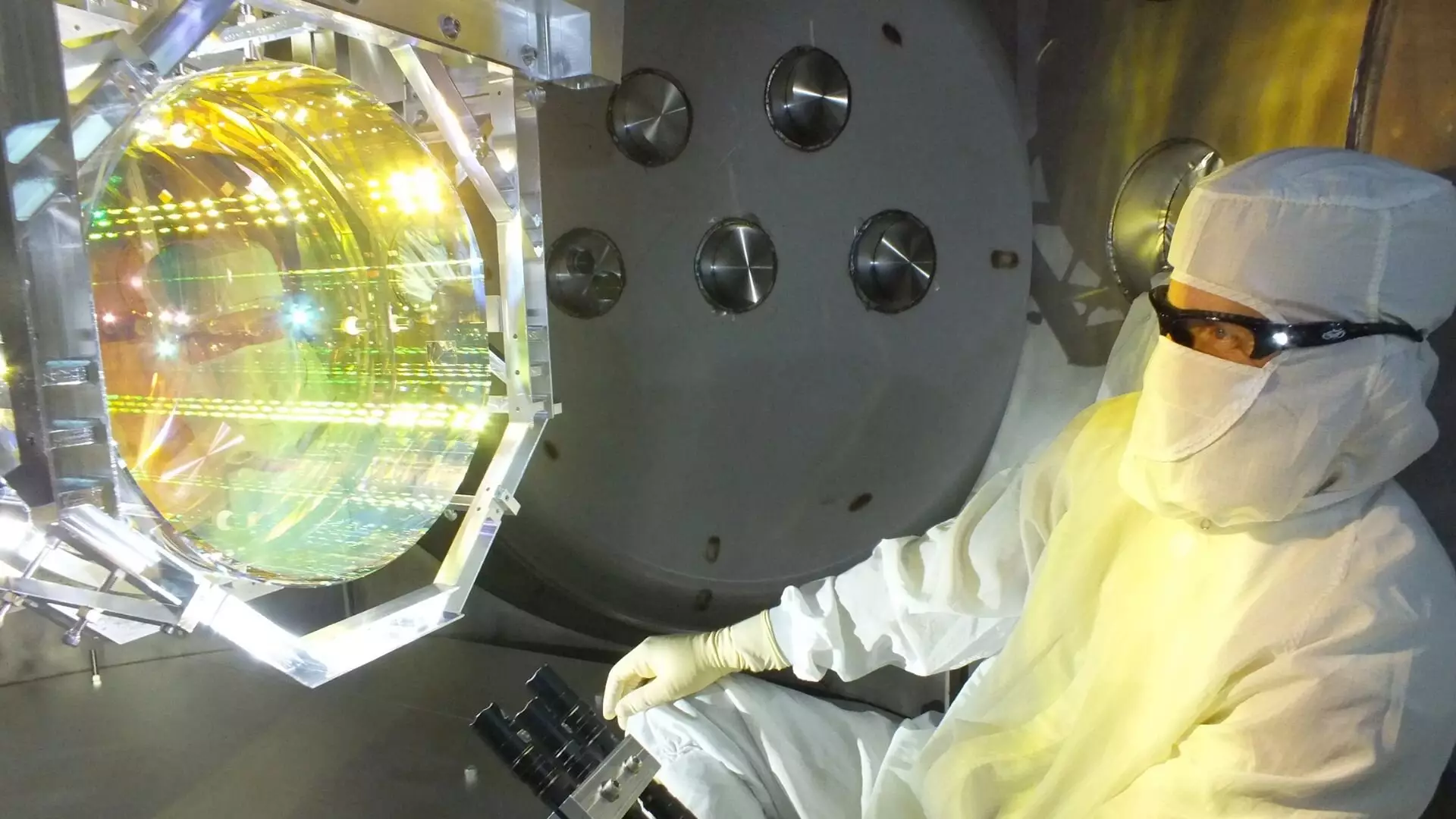Dark matter is a perennially intriguing concept in astrophysics, comprising approximately 30% of the universe’s total matter. Unlike ordinary matter, dark matter eludes direct detection; it neither absorbs nor emits light, making it imperceptible to conventional observational methods. Its existence is perceived through its gravitational influence on visible celestial bodies, like galaxies and galaxy clusters. This enigmatic substance has spurred extensive scientific investigation, fostering a race among researchers to uncover the underlying mechanisms governing its behavior and properties. In a groundbreaking study recently published in *Physical Review Letters*, researchers have shifted their focus to a specific type of dark matter known as scalar field dark matter, proposing an innovative methodology using gravitational wave detectors like LIGO to facilitate this search.
Gravitational wave detectors are revolutionary instruments that can measure minuscule disturbances in spacetime, typically induced by cosmic events such as the collision of black holes or neutron stars. The Laser Interferometer Gravitational-Wave Observatory (LIGO) is at the forefront of this research, employing laser interferometry to achieve unprecedented sensitivity. This setup consists of two perpendicular arms, each spanning four kilometers, through which laser beams are sent. If a gravitational wave passes, it causes one arm to stretch while the other compresses, leading to a discernible change in the interference pattern of the light beams. Such infinitesimal shifts can yield invaluable insights into the fundamental nature of the universe, and as Dr. Alexandre Sébastien Göttel from Cardiff University highlights, the LIGO facilities can also be utilized for the pursuit of scalar field dark matter, thereby bridging gravitational wave physics with fundamental particle research.
Scalar field dark matter refers to ultralight scalar bosons, which are distinct in that they possess no intrinsic spin. This specific characteristic allows them to maintain their properties without alteration, even when subjected to rotation. These particles are theorized to interact subtly with both matter and light, leading to a behavior reminiscent of waves rather than discrete particles. Consequently, scalar field dark matter may form stable, cloud-like aggregates in space. This facet makes them prime candidates for detection through gravitational wave experiments; theorists posit that the wave-like oscillations of dark matter could generate minuscule fluctuations in ordinary matter.
Dr. Göttel’s research team has taken strides in utilizing the capabilities of LIGO to probe the existence of these elusive dark matter waves. They theorize that if scalar field dark matter operates under the principles of wave mechanics, its oscillations could potentially induce observable effects in the machinery of LIGO itself. This hypothesis positions LIGO not just as a tool for detecting gravitational waves but also as a sophisticated instrument capable of unveiling the mysteries surrounding scalar dark matter.
To explore this hypothesis, Göttel and his team employed data from LIGO’s third observational run, expanding their analytical scope to lower frequency ranges between 10 and 180 Hertz. This adjustment enhanced their sensitivity and offered new opportunities for detection. Unlike previous efforts that focused solely on how scalar dark matter would affect beam splitters, Göttel’s team incorporated additional considerations regarding how oscillations could impact the interferometer’s mirrors. At the atomic level, these oscillations are significant; since dark matter influences all matter, the resultant fluctuations could effectively modify the fundamental constants that dictate electromagnetic interactions.
Utilizing advanced simulation software, the team conceptualized the interactions between scalar field dark matter and the essential components of LIGO. They sought to simulate outputs indicative of dark matter presence, establishing a framework for identifying potential signals in LIGO’s data. By employing a logarithmic spectral analysis technique, they meticulously combed through LIGO data to discern any compelling patterns corresponding to scalar field dark matter’s hypothesized effects.
The initial results of this extensive analysis revealed no conclusive evidence for scalar field dark matter in the collected LIGO data. However, the research achieved a significant milestone by establishing new upper limits on the interaction strength between dark matter and LIGO’s components, improving previous benchmarks by a factor of 10,000 in the frequency range under examination. This ambitious work redefined how researchers approach the detection of scalar field dark matter and deepened the understanding of its potential interactions.
Göttel’s team also made meaningful contributions towards improving LIGO’s experimental design, suggesting that minor modifications in mirror thickness could lead to substantial advancements in detection capability. Looking forward, they anticipate that upcoming gravitational wave detectors could surpass traditional indirect methodologies and potentially eliminate entire classes of scalar field dark matter theories.
This research illuminates a novel approach in the ongoing quest to unravel the cosmic riddle of dark matter, centering on innovative analytical techniques, advanced simulation methods, and the transformative potential of gravitational wave detection technologies. The implications of these findings may not only redefine our understanding of dark matter but may also pave the way for future breakthroughs in gravitational physics and cosmology.


Leave a Reply